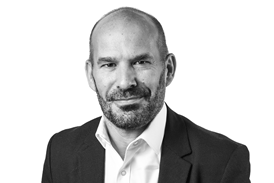The Olympics isn’t just about show-stopping stadiums. In fact, the budget for venues is £700m less than the cost of the no-frills enabling works, roads and utilities
Just as every gold medallist has a backroom staff of trainers, physios and doctors to thank for their achievement, so too the Olympic venues have a hidden support network.
The infrastructure on the Olympic site might not grab any headlines, but it’s a massive factor in the success or otherwise of the 2012 project.
“Infrastructure is the unsung hero of this project,” says Simon Wright, infrastructure director of the Olympic site, sitting in one of its many offices. “It is definitely in the shadow of the venues. To be fair, I can see why. The Games are about sport and the sport happens in the venues. The infrastructure is just here as a supporting mechanism. But it’s a very important one. It’s a massive long-term investment.”
It’s a fairly massive short-term one, too. Infrastructure accounts for some £1.9bn of the overall budget (see box), compared with the £1.2bn that is being spent on the venues, suggesting it will deserve a place on the podium alongside the more architectural elements if the Games turn out to be a winner. So where is the money going?
Wright’s remit covers four areas: enabling works, which are winding up on the site at the moment and have involved soil treatment, excavation, demolition and decontamination of the site; structures, bridges and highways (SBH) which “does what it says on the tin”; utilities; and landscaping. The cost breakdown of these four areas is about £500m, £600m, £220m and £200m respectively.
The Thames Gateway struggled because it lacked that backbone. Here it has been done from day one
Simon Wright, ODA
Wright explains that the enabling works alone have been, and continue to be, an epic task. “You start off with a piece of land that has had no investment for a very long time and that has pretty much reached the end of its commercial life. We basically had to start again and clean up the contamination of the past. That’s 150 years of waste dumped on this site up until the Second World War. This was one of the major waste dumps in east London, full of refuse, bomb damage, rubble, chemical and oil waste. We’ve had to run all the soil through a treatment plant - 2.3 million m3 of soil. It has taken a great deal of time and not a small sum of money.”
Then there is the main bulk of the work, SBH. The Olympic site includes 20km of highway and more than 30 bridges - required because the site is dissected by rivers, three or four strands of canal and several railway lines. “It really is a necessity to have so many bridges to piece the site together,” says Wright when questioned on the thinking behind having quite such a high number. “I appreciate that it does seem a lot but this is a 2.5km2 area. That’s a lot of waterways and railways to span over.”
The utilities work, because of the initial state of the site was, again, something that had to be started from scratch. Wright points specifically to the long-term benefits of this work - something he believes justifies such a large budget. The enabling works, SBH and landscaping are all being done with the site’s legacy capabilities in mind, but it is the utilities that will make the most marked difference in the long run.
“There will be lots of new homes here. Some 10,000 on the park after the Games and the utilities to serve them will already be here. And they will be modern, up-to-date, energy efficient. We will have enabled a backbone of future infrastructure to support long-term development. If you think about the Thames Gateway and why it struggled in places, it is because it lacked that backbone. Here it has been done from day one.”
Wright says he understands why there is so much concern surrounding the rising costs of the Olympics, particularly in the current economic circumstances, but says the money is being spent wisely: “Clearly I understand the difficult fiscal position that the country is in. What I would say is that our budgets were set back in 2007 and we have been able to offer up a return from that money - albeit a small one. The project is well advanced and we believe we are spending the money wisely. This is about a long-term investment and we are going to great lengths to ensure that whatever we spend is done with great care. We have ongoing value engineering and value management systems in place and discussions about whether we absolutely need something or whether we can do without it.”
In terms of where the infrastructure work is up to at the moment, Wright insists everything is on track for a timely delivery on budget. “We are where we expected to be,” he says. “A lot of the bridges are in and we’re now into finishing the utilities and completing all the circuits. The electrical network is already live and operational.”
The next step will be to get the energy centre up and running, as well as finishing off the roads and bridges and getting the sites cleared. “By the latter part of this year most of the infrastructure will be complete, ready for the construction of the venues to carry on, as they have various different deadline periods,” says Wright.
“At the moment we’re entirely confident everything will be finished on time. The simple fact of the matter is that it has to be.”

























No comments yet